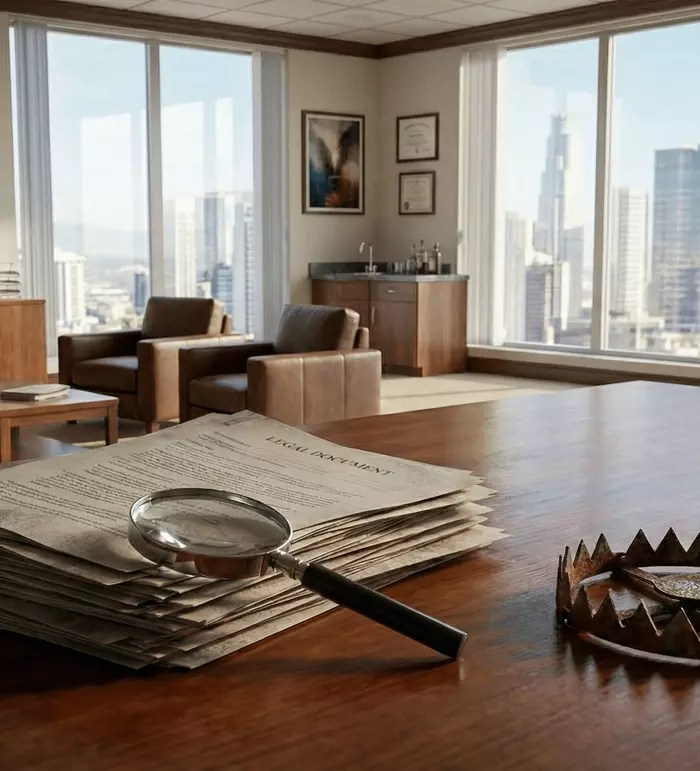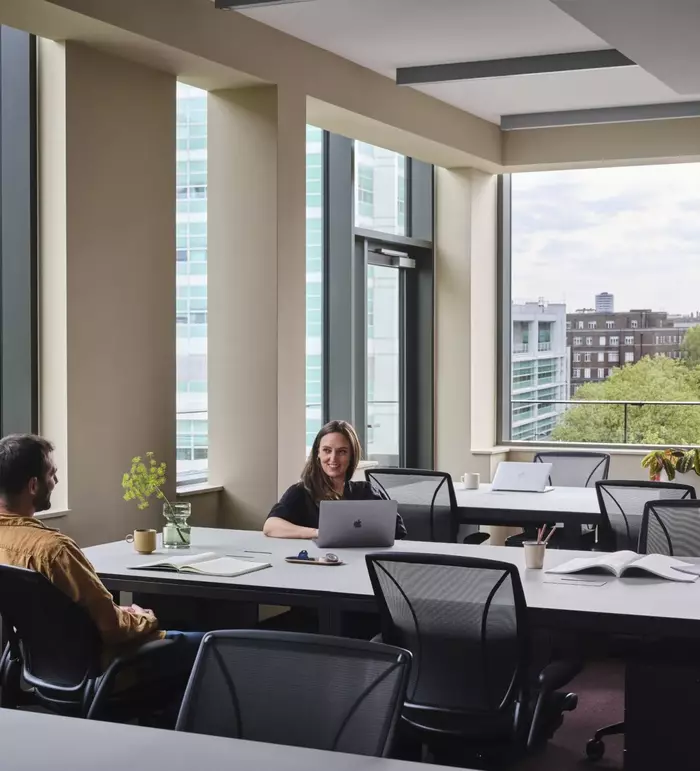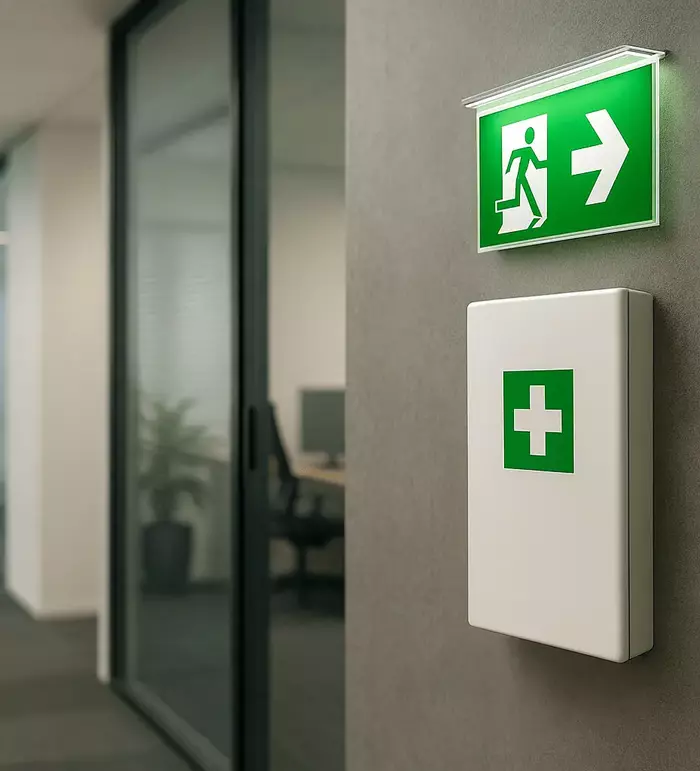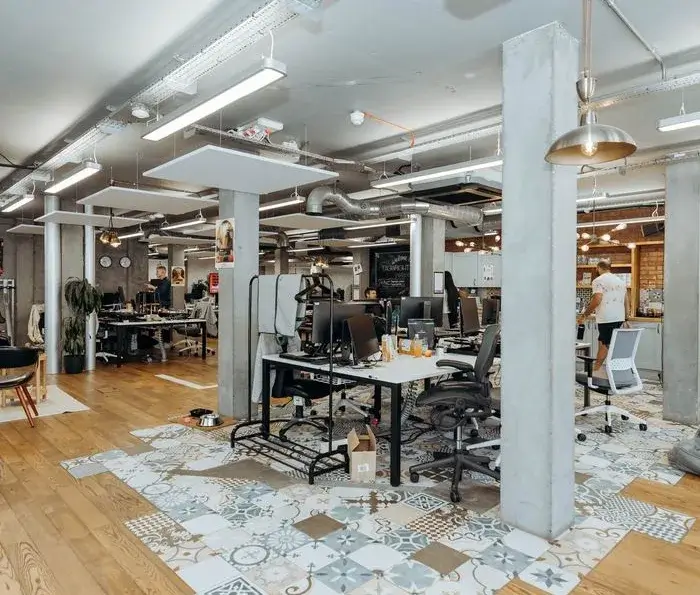Authored by Michael Dubicki 
Published 21/07/2022
Leases – A traditional property transaction explained
This overview aims to explore the nature of leasehold or ‘traditional’ office space and the process involved with acquiring it.
It has been created to help you as the customer to better understand the key considerations involved so that you can identify and secure this type of space effectively, if it proves the best choice for you.
Table of contents:
What is a commercial lease?
Who is involved in acquiring a lease?
Why is this important?
Why does everyone need an agent, solicitor etc.?
How much do agents / solicitors cost?
How long does it take to acquire one?
What steps do I need to go through when acquiring a lease?
What costs apply to leasehold space?
Can I compare the cost of leases and flexible offices?
Are there different ways to lease space?
Anything else I need to think about?
Glossary of terms
If you would prefer to speak with us about any of these subjects, please don’t hesitate to pick up the phone or leave your details below and we’ll give you a call!
 What is a commercial lease?
What is a commercial lease?
A commercial lease is a legally binding agreement for the occupation of office space – it is made between the landlord of a property (who typically owns it) and a business tenant (the company which will occupy it.)
This agreement gives you the right to occupy a very specific piece of space, if you stay within the rules of occupation (pay on time, use it for the right purpose etc.)
This right to occupy is something quite important – it means that if you keep to the rules, you can’t just be moved or thrown out. This security of tenure is something which historically has been very important for businesses – the security of having the legal right to occupy a space for years on end.
A lease is typically quite long – traditionally between 3 and 25 years although the most common seems to be 5 years with the possibility of break options after 3. Leases have been getting shorter and shorter over the last 25 years or so.
The shorter the lease, the less likely any rent-free, discounts etc. The longer, the more possible concessions.
Back to top
 Who is involved in acquiring a lease?
Who is involved in acquiring a lease?
Most of the time there are 6 parties involved that occupy two competing parts of the transaction. Bear in mind that these are people involved before the lease is yours. Once it’s yours, there will be more people involved (but more on this later):
1) The landlord.
2) The agent representing the landlord.
3) The solicitor representing the landlord.
4) The tenant.
5) The agent representing the tenant.
6) The solicitor representing the tenant.
Whilst it may be stating the obvious, it is very important to remember that:
The agent and solicitor representing the landlord will be paid by the landlord to ensure the best possible commercial terms for the landlord.
And on the other side:
The agent and solicitor representing the tenant will be paid by the tenant to ensure the best possible commercial terms for the tenant.
Back to top
 Why is this important?
Why is this important?
A lease is a very complicated legal document dealing with everything from everyone’s rights, payments, taxes, damages, insurances, access…
Typically speaking, a standard lease document will run to anywhere between 30 and 90 pages of small-print legal terminology, most of which will be linked to British property law.
To get to the best possible position commercially, each side of the transaction will do well to employ experts to make sure they ‘win’ on as many points as possible – either by reducing costs or reducing responsibilities.
Back to top
 Why does everyone need an agent, solicitor etc.?
Why does everyone need an agent, solicitor etc.?
For the same reason as above – a lease is complicated. Most of us will not have a working knowledge of property law.
Which is why it makes sense to employ experts to represent your best interests during a transaction.
It’s pretty much the same as paying both your agent and conveyancing solicitor when buying a house. You just wouldn’t be able to do it yourself…
Back to top
 How much do agents / solicitors cost?
How much do agents / solicitors cost?
A solicitor will probably cost somewhere between £1,000 and £3,000, depending on how complicated the transaction is. But some will charge more, some will charge less… you need to shop around.
Agents charge in lots of different ways.
The most common one is a cost based on a percentage of the annual rent, plus a percentage of any discounts or freebies they manage to negotiate on your behalf. These percentages vary massively so it’s not fair to pin down a figure, but we’d say you should expect ranges of 5% to 10% of the annual rent, plus 2% to 5% of any savings / discounts / concessions.
Others will simply charge a flat fee for their services, regardless of the complexity or overrunning of the process.
Others will even be prepared to put their money where their mouth is and agree to get their fee only from the discounts they can get you. Again, this would probably be a percentage.
Regardless, it’s very important to remember that agents have a choice in whether to take on business or not. After all, they have a business to run and profits to make, and their time is not free.
So, you may find that some work based on a minimum fee – anything that looks like it won’t give them the income they need, they’ll refuse or ignore.
This probably won’t be mentioned up-front on websites or leaflets though…
But regardless, if you choose to acquire a traditional lease, you will need to be at peace with the fact that both legal and professional fees will be payable by you.
Back to top
 How long does it take to acquire one?
How long does it take to acquire one?
Well, it’s not a quick process.
If you manage to find, negotiate, and sign a lease inside of 3 months, you’re done very well indeed! Let us know how you managed it and which agent helped you!
Most of the time you should probably set aside a solid 6 months, because finding and signing a lease is only part of the process. After all, most of the time the space will be empty, without any connectivity, furniture etc.
Back to top
 What steps do I need to go through when acquiring a lease?
What steps do I need to go through when acquiring a lease?
Below is a very simplified list of what’s involved:
1) Find an agent and agree terms for them to represent you.
2) View a range of offices until you find the one you want (this could take a while.)
3) Make an offer.
4) Negotiate acceptable deal.
5) Produce Heads of Terms (a shorthand summary of what the lease will cover.)
6) The letting agent will instruct the landlord’s solicitors to draw up a lease (this could take a while.)
7) This lease will be sent to your solicitors.
8) Both sides of solicitors will hammer out the details and you’ll have a lease to approve (this will absolutely take a while.)
9) The landlord will take up references and will ask for 3 years of audited company accounts (this could take a while.)
10) Generally, if the accounts do not show a profit greater than 3 times the annual rent for 3 consecutive years then your covenant strength will be considered insufficient. In this case the landlord may ask for:
A) A personal guarantee from the director – meaning they would be personally liable for non-payment of costs, or
B) A significant up-front amount of money to cover them against the risk of taking on a company without a credible financial history.
11) You will probably want to get a schedule of condition which details the state the property is in, so that at the end of the lease you know what condition to leave the space in.
12) You will probably also want to get an up-to-date building survey so that any problems with the building you uncover can be outside of your responsibility.
13) If you are looking to make changes to the layout of the space, the landlord may need to sign a separate document called a license to alter which will give you permission to make specific changes (this can delay things if you are unsure of what you need to build/change.)
14) Sign the lease, pay the deposit.
15) Once this is done you will be able to get access to the space to start making changes.
I’ve got my lease! Now what?
Now that you’ve got the space, you’ll want to make sure it’s fit to live in.
Unless the space is in the exact condition you want, you will want to bring in fit-out contractors to re-configure the layout – build meeting rooms, divide up different offices, install air-con / access systems, lay down flooring / carpet, build server rooms etc.
At the same time you’ll have to sort out the IT and telephone connectivity in the space, since this will be your responsibility too. Telephone and internet lines will need to be set up and connected so that you can actually use the office and pay for those services.
Furniture, telephone handsets, meeting tables, whiteboards, plants, televisions, coffee machines, water dispensers… all these bits come next. Either as part of moving from one office to another or getting new / extra ones if you’re moving from a smaller office to a bigger one. These can take quite some time – lead times on furniture can be 3 months + and even longer if you’re getting something bespoke / exotic!
Back to top
 What costs apply to leasehold space?
What costs apply to leasehold space?
There are lots of costs you’ll need to consider (and manage yourself) when taking on a traditional lease.
The management of this stuff typically gets wrapped up into the Office Manager’s (or similar) role but if you don’t have a dedicated person to look after it, then you’ll either have to hire one, pay a managing agent to take care of things for you, or just look after everything yourself:
- Rent: the cost you pay to the landlord for using the space. It is worked out based on a price per square foot, which is an annual cost. So if you take on 1,000 square feet with a rent of £50 per square foot, this means your rent only will be £50,000 (+ VAT) per year. Rent in traditional leases is almost always paid quarterly in advance.
- Service Charge: this is less obvious, but almost always there. It is, quite simply, a cost you pay to the landlord for them to service the building. This will cover things like front-of-house reception (if there is one), cleaning of staircases, regular maintenance… all the bits the landlord is responsible for… but charges back to you. This is again worked out based on a price per square foot. So using the same example as above, if the service charge is £12 per square foot and you have 1,000sqft, this will be an extra £12,000 (+ VAT) per year above the rent bill.
- Business Rates: this is a cost you pay to the local authority (council) which is based on the rateable value of the space you are taking… think the equivalent of council tax on a flat or house. Each office has a unique cost.
- Cleaning: unless you can do it yourself or manage to get the landlord to cover it (quite unlikely) then cleaning of your space is your responsibility. You’ll need to budget for this.
- Utilities: gas and electricity costs will be your responsibility
- Telephone / internet: again, these are your responsibility
- Refreshments: water, tea, coffee, snacks… all the little bits that your people consume daily that keep them happy
- Repairs & Maintenance: all the things that break or go wrong – again down to you unless you specifically carved them out of the lease so that the landlord has to pay for them
- Sickness & holiday: if you have a space big enough to warrant your own reception, you’ll need to consider the cost of their sickness and holiday over the course of each year.
- Fit-out and refurbishment: this can be a very large expense, or it could be zero, and with a lease it always comes up front. If you walk into a space that you think you can occupy without doing any work to it, awesome. But most will paint it, re-carpet, perhaps re-do the kitchen and toilets… if you want to do a large top-to-bottom job, this could run into tens of thousands of pounds, possibly hundreds if you have expensive tastes.
- Dilapidations: at the end of your agreement, you’ll need to leave the space in the same condition as you found it. If this means replacing worn floors, repainting walls, taking down meeting rooms you’ve built, then this is your responsibility unless you can work something out with the landlord and they like what you’ve done with the place. Again, difficult to estimate how much this would be but £10 + VAT per square foot is probably a fair assumption – again, based on 1,000 square feet, that’s £10,000 as a one-off cost at the end of your lease.
- Legal & Agent fees: we mentioned these above, but you will need to pay both your solicitors and your agent based on whatever deal you negotiated with them.
There are lots more… insurance, security, waste disposal, ground maintenance, water & sewerage… probably a few more bits we haven’t really covered.
Back to top

 Can I compare the cost of leases and flexible offices?
Can I compare the cost of leases and flexible offices?
Yes, you can.
We’ve developed a handy calculator (which we’re pretty sure is the only one of its kind) that tries to consider all the above costs and puts them up against the cost of flexible, all-inclusive office space.
The calculator currently covers central London, but the principle of the costs is uses can be applied anywhere – you just need to use the right starting per square foot cost for rent-only.
Use the link below to get reports sent to you for different areas of London:
https://www.flexioffices.co.uk/office-space-calculator
Back to top
 Are there different ways to lease space?
Are there different ways to lease space?
Short answer, yes.
A standard lease is one that you agree with a landlord to occupy space which is empty and available.
A sublease is where an existing tenant sublets the space to you – they move out, you move in. You pay them, they pay the landlord. This one can get quite complicated because it involves 3 sides (you, the original tenant and the landlord) and issues of liability and responsibility get quite testy.
An assignment is where you take the space from an existing tenant, but you become the new tenant and you take over the lease from them, usually for the duration of however long is left. But again, these are complicated… sometimes you could still be liable for a default even if you assigned your lease to someone else, so it’s good to check.
There are even what are colloquially known as fag-end leases, which are basically like assignments but there is so little time left on the length of the agreement that they tend to get offered at very cheap rates for 12 or 18 months.
Back to top
 Anything else useful to consider?
Anything else useful to consider?
As with anything as complex as a legal agreement which might tie you in for years of occupation, it’s crucial that you get the best possible representation. Having the right professional representing you in negotiations will save a huge amount of time and money in the end.
Think about how much space you need to take on. A lease is a long-term commitment and you can’t just give some of it back without major complications. Similarly, if you take on a space and outgrow it, the only way you can take more space is by signing another lease on more space, if there is more space around.
Many companies think that they need space for everyone, but the advent of hybrid and flexible working has ushered in an era of looking at office space in a different way. Greater flexibility and shorter commitment lengths seem to be the way forward and are likely to continue for a long while to come.
As with everything, it’s best to talk these things out with professionals that know their field and can often suggest out-of-left-field solutions that you might not have thought of before.
Hopefully the above has been helpful, but if you have any other questions or concerns or are wondering whether to lease an office or go for something much more flexible, please don’t hesitate to give us a call. We will be happy to talk, advise, and even recommend people to speak with.
Back to top
Glossary of terms
Landlord – owns the space you want to rent.
Tenant – occupies space and pays rent to the landlord.
Lease – legally binding agreement for the occupation of office space.
Security of tenure – the right to occupy office space without being thrown out as long as you adhere to the terms of the lease.
Landlord agent – property professional representing the commercial interests of a landlord.
Landlord solicitor – legal professional representing the commercial interests of a landlord.
Tenant agent – property professional representing the commercial interests of a tenant.
Tenant solicitor – property professional representing the commercial interests of a tenant.
Heads of terms – a shortened document summarising the terms of the lease before a transaction is completed.
Personal guarantee – responsibility for a company’s non-payment of costs being covered by an individual.
Fit-out contractor – professional company or person involved with building office environments.
Rent – the cost of renting the space.
Service charge – the cost charged to the tenant by the landlord for upkeep and maintenance of a building.
Business rates – a tax charged by the local authority based on the rateable value of a specific space.
Dilapidations – cost borne by a tenant at the end of their lease to bring an office back to the original condition before their occupation.
Covenant strength – an indicator of your company’s financial stability as demonstrated by a track-record of profitability backed by audited accounts.
License to alter – written permission given by the landlord to make changes to the layout / build of space which details the exact alterations permitted.
Back to top


















 What is a commercial lease?
What is a commercial lease? Who is involved in acquiring a lease?
Who is involved in acquiring a lease?  Why is this important?
Why is this important?  Why does everyone need an agent, solicitor etc.?
Why does everyone need an agent, solicitor etc.?  How much do agents / solicitors cost?
How much do agents / solicitors cost?  How long does it take to acquire one?
How long does it take to acquire one?  What steps do I need to go through when acquiring a lease?
What steps do I need to go through when acquiring a lease?  What costs apply to leasehold space?
What costs apply to leasehold space?
 Can I compare the cost of leases and flexible offices?
Can I compare the cost of leases and flexible offices?  Are there different ways to lease space?
Are there different ways to lease space?  Anything else useful to consider?
Anything else useful to consider?